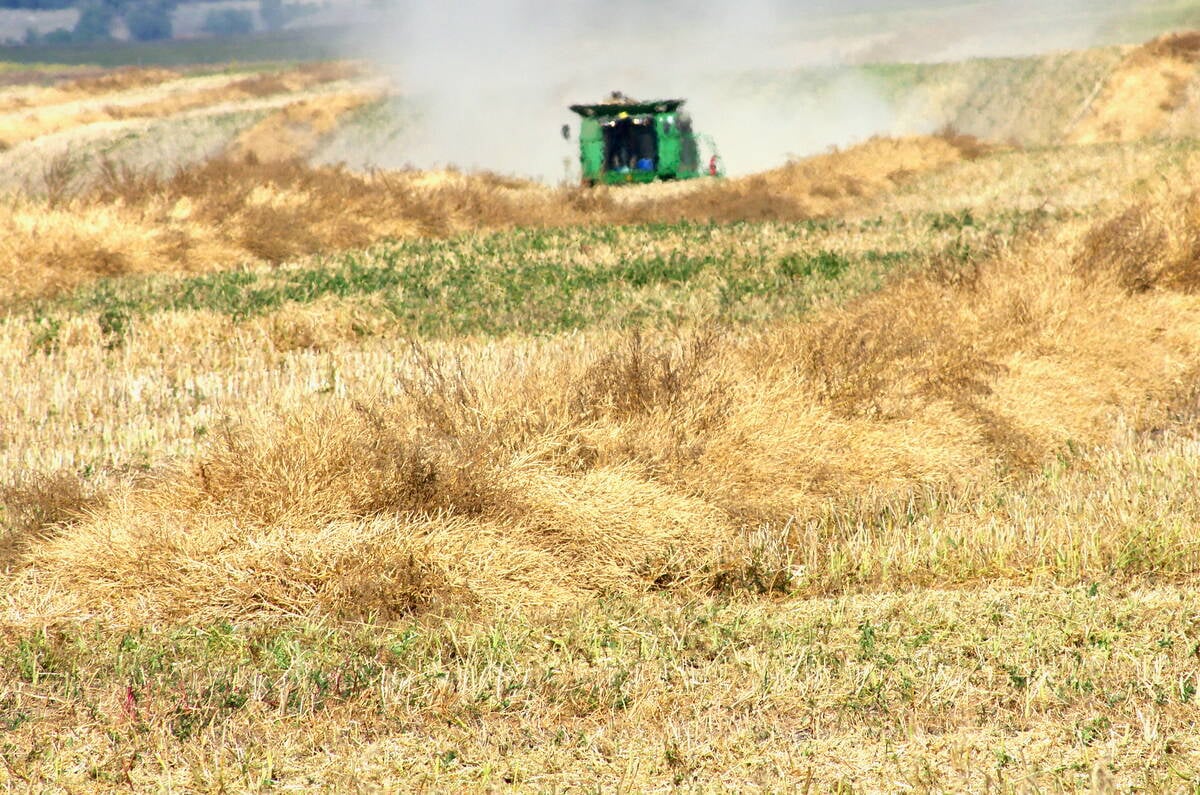Producers who are hanging onto their cull cows hoping for a market rally might see a modest price increase this spring.
Anne Dunford, senior analyst with Canfax, says Canadian feedlots are far from full and a shortage of finished steers and heifers is expected to develop this spring.
That might cause packers to seek more cows to fill out their needs.
“If they want to draw them out they’ll have to pay a little more money,” she told a crowd of cattle producers at Cattle Congress in Saskatoon on Feb. 7.
Read Also

Manitoba searches for Plan B on canola oil exports
A new report explores Manitoba’s current canola oil trade and possible alternative markets to the U.S.
The rally will be limited because of generally large supplies of beef in North America due to bans on Canadian and U.S. exports. However, she said there should be some room to move on cow prices.
“Instead of this 15-20 cent (per pound) level we’ve seen almost all winter, hopefully we can move somewhere to the 25-30 cent range.”
She urged producers to take advantage of such a rally because otherwise the outlook is gloomy. Most hope rests on reopening borders.
The Canadian cow herd is the largest it has ever been at more than five million head. Cow slaughter has been running at a minimal pace since the discovery of BSE in Canada last May and prices have been at record lows.
Many cows were bred last year and are part of a breeding herd that will produce the largest Canadian calf crop ever this spring. However, the need to market more cows is increasing.
Some federally inspected slaughter plants are adjusting operations to accommodate more cows and for the first time since Canada’s BSE announcement on May 20, cow kill climbed to 8,000 two weeks ago.
Brad Wildeman, chair of the Canadian Cattlemen’s Association’s foreign trade committee, said there is a potential market for older cows but it requires policy and infrastructure changes.
Canadians could potentially eat all the culls produced, but last year only 24 percent of the processed beef sold in Canada came from Canadian cows. Most Canadian cows are exported either live or as beef.
Most boneless beef Canadians eat is cheap imported product that enters through a tariff rate quota program.
Wildeman said Canada is required to allow 76,409 tonnes of imported beef tariff-free under its World Trade Organization commitments. But that is not enough to meet demand and Canadian processors asked for a supplemental quota of 54,755 tonnes in 2002.
“That’s about 300,000 cows that we could slaughter and use in this country,” he told producers.
If Canada stuck to its WTO limits, instead of allowing the “cheapest beef in the world” to enter the country from places such as Australia, New Zealand and Uruguay, the cull cow dilemma would be mitigated.
“We could get through this year without too much problem.”
But even if all imports were stopped, Canada does not have the slaughter capacity to kill all its cows. That is slowly changing, said Dunford.
- Mainstream plants are adjusting to kill more culls. Also, shuttered plants are reopening and new facilities are planned.
- An existing small plant in Salmon Arm, B.C. is going to reopen.
- Alberta producers and investors are talking about building a plant.
- DMB Food Processors expects to start construction of a $65 million beef and pork facility at Qu’Appelle, Sask., this spring.
- Rancher’s Choice Beef Co-op Ltd. plans to raise $11-$12 million to buy a hog processing plant in Winnipeg and convert it into a cull cattle plant.
- MGI Packers in Kitchener, Ont., which closed in the fall of 2001, should reopen this spring.
Existing plants will be the quickest to start killing. New plants would take 18 months to two years to open, Dunford said.















